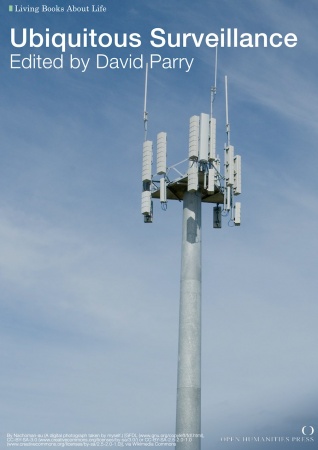Die Datenschleuder: Das wissenschaftliche Fachblatt für Datenreisende, 1-96 (1984-2011) [German]
Filed under magazine | Tags: · cctv, cryptography, data, digital human rights, freedom of information, hacker culture, hacking, privacy, technology

“Die Datenschleuder. Das wissenschaftliche Fachblatt für Datenreisende, literally translated as The Data Slingshot: The scientific trade journal for data voyagers, is a German hacker magazine that is released in irregular intervals by the Chaos Computer Club (CCC).
Topics include political and technical aspects of the digital world such as freedom of information, data privacy (data protection), closed-circuit television, personal privacy (personal rights), cryptography and many more.
Die Datenschleuder was first published in 1984 and also can be subscribed to independent of a membership in the CCC. Back issues are freely available on the Internet as well. The current print paper format is DIN A5 as per ISO 216. Its editorial office is carried on virtually over the Internet, while the magazine itself is printed in and distributed from Berlin.” (Wikipedia)
Edited by 46halbe, starbug and erdgeist
Publisher Chaos Computer Club e.V., Hamburg
ISSN 0930-1054
PDFs/HTML
PDFs/HTML
Internet Archive
EFF: Defending Privacy at the U.S. Border: A Guide for Travelers Carrying Digital Devices (2011)
Filed under manual | Tags: · data, encryption, law, privacy

Our lives are on our laptops – family photos, medical documents, banking information, details about what websites we visit, and so much more. Thanks to protections enshrined in the U.S. Constitution, the government generally can’t snoop through your laptop for no reason. But those privacy protections don’t safeguard travelers at the U.S. border, where the U.S. government can take an electronic device, search through all the files, and keep it for a while for further scrutiny – without any suspicion of wrongdoing whatsoever.
For doctors, lawyers, and many business professionals, these border searches can compromise the privacy of sensitive professional information, including trade secrets, attorney-client and doctor-patient communications, research and business strategies, some of which a traveler has legal and contractual obligations to protect. For the rest of us, searches that can reach our personal correspondence, health information, and financial records are reasonably viewed as an affront to privacy and dignity and inconsistent with the values of a free society.
Despite the lack of legal protections against the search itself, however, those concerned about the security and privacy of the information on their devices at the border can use technological measures in an effort to protect their data. They can also choose not to take private data across the border with them at all, and then use technical measures to retrieve it from abroad. As the explanations in this publication demonstrate, some of these technical measures are simple to implement, while others are complex and require significant technical skill.
by Seth Schoen, Marcia Hofmann, Rowan Reynolds
Published by Electronic Frontier Foundation, December 2011
Creative Commons Attribution 3.0 Unported License
23 pages
PDF
View online
View online (HTML)
David Parry (ed.): Ubiquitous Surveillance (2011-)
Filed under living book | Tags: · data mining, law, privacy, search, surveillance, web

“In 1996 when John Perry Barlow wrote A Cyberspace Independence Declaration, internet pioneers hoped that the online world Bartlow was describing would come to pass. While Barlow’s rhetoric was admittedly ‘grandiose,’ his central claim, that the internet was a place of freedom separate from the limits of the physical world, reflected the utopic atmosphere of the time. The technological revolution, in particular the rise of the digital network, seemed to point to a future ‘where anyone, anywhere may express his or her beliefs, no matter how singular, without fear of being coerced into silence or conformity’ (Barlow, 1996). While not everyone in the late 90s could be characterized as a cyberutopian, the dominant mood harbored a sense that the digital network would bring with it newfound, unregulatable freedoms.” (from Introduction)
Publisher Open Humanities Press
Living Books About Life series
View online (wiki/PDF/HTML articles)
View online (map interface to the articles)
PDF (PDF’d Introduction with hyperlinked articles)

